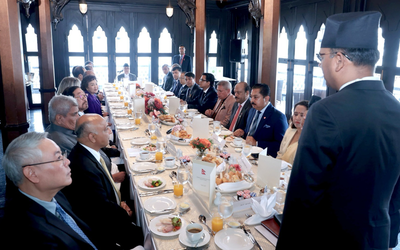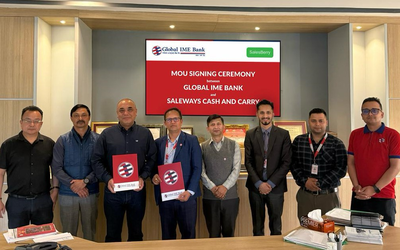More on Economy




This monsoon season, once again, farmers across the country faced scarcity of fertilizers. This was a time when farmers needed to enrich the soil with nitrogen and potassium-based fertilizers as they prepared for a new plantation season.
Unfortunately, their problem has been a recurrent one – a clear result of botched policies and thorough mismanagement.
Even the officials admit that the root of the problem lies in their policy.
The latest problem was the strict border control by India to restrict smuggling of ‘subsidized fertilizers’ from India to Nepal.
Earlier, due to price differences, farmers – especially those in border areas – used to use those Indian fertilizer. But this year the border authorities have tightened the flow of fertilizers.
Having removed subsidies on agriculture, particularly the chemical fertilzers, upon advice from multilateral donors, the government had exposed Nepali farmers to years of difficult situation.
Across the border, the Indian farmers enjoy subsidies on fertilizer, seeds, and power whereas their Nepalese counterpart face fertilizers that are three times more expensive and virtually no subsidy.
And they are asked to compete.
“The experiences of past few years have made us realize that we must provide subsidies to our farmers if we want to develop our agriculture,” said Keshab Acharya, senior economic advisor at the Ministry of Finance.
The government, he said, had, therefore, re-introduced subsidy on fertilizers last year. “We will increase the subsidy in this budget as well,” he added.
Sources say that the government plans to increase the subsidy amount on fertilizer from around Rs 1.5 billion to Rs 2.5 billion.
“But even that amount will not be enough,” said Dr. Hari Dahal, spokesperson at the Ministry of Agriculture and Cooperatives.
Nepalese farmers consume around 500,000 metric ton of chemical fertilizer annually.
The current level of subsidy means farmers can enjoy cheaper price in only 100,000 metric tons of them.
“We need to provide subsidy on at least 300,000 metric tons to be able to smoothen our supplies and avoid unnecessary scarcities,” said Dr. Dahal.
“Till we do so, the stories of scarcity of fertilizers at the crunch agricultural and plantation seasons will continue to repeat,” he said.
However,providing the subsidy on the larger chunk of fertilizer alone may not provide the expected solution.
That will leave a smaller chunk to be imported in market price by private sector. “But how can a private sector be in a position to import fertilizers that will clearly be much more expensive and expect to sell them? The price difference on two types of fertilizer will distort the supply side rendering more problems,” said an agriculture expert.
Is Factory An Answer?
The government had once mulled the idea of establishing a fertilizer factory inside the country to overcome the fertilizer woes once and for all.
This idea, too, has hit the stonewall.
Authorities point at the extreme power shortages. “How can such a power-intesive factory be established in a country that faces up to 16 hours of load shedding a day?” asked Dr. Dahal.
Besides, the demand of Nepalese farmers are too low to make such factory feasible, he said.
The Agriculture Ministry officials have said that they are working on a plan to have an integrated fertilizer usage – where subsidies on chemical fertilizer, and wider usage of local organic fertilizers will be combined to increase the agriculture productivity.
That is for the long term, though.
For the short term, the farmers need to have adequate fertilizers at right time – a factor that can have impact of up to fifty percent increase in the agricultural productivity.



